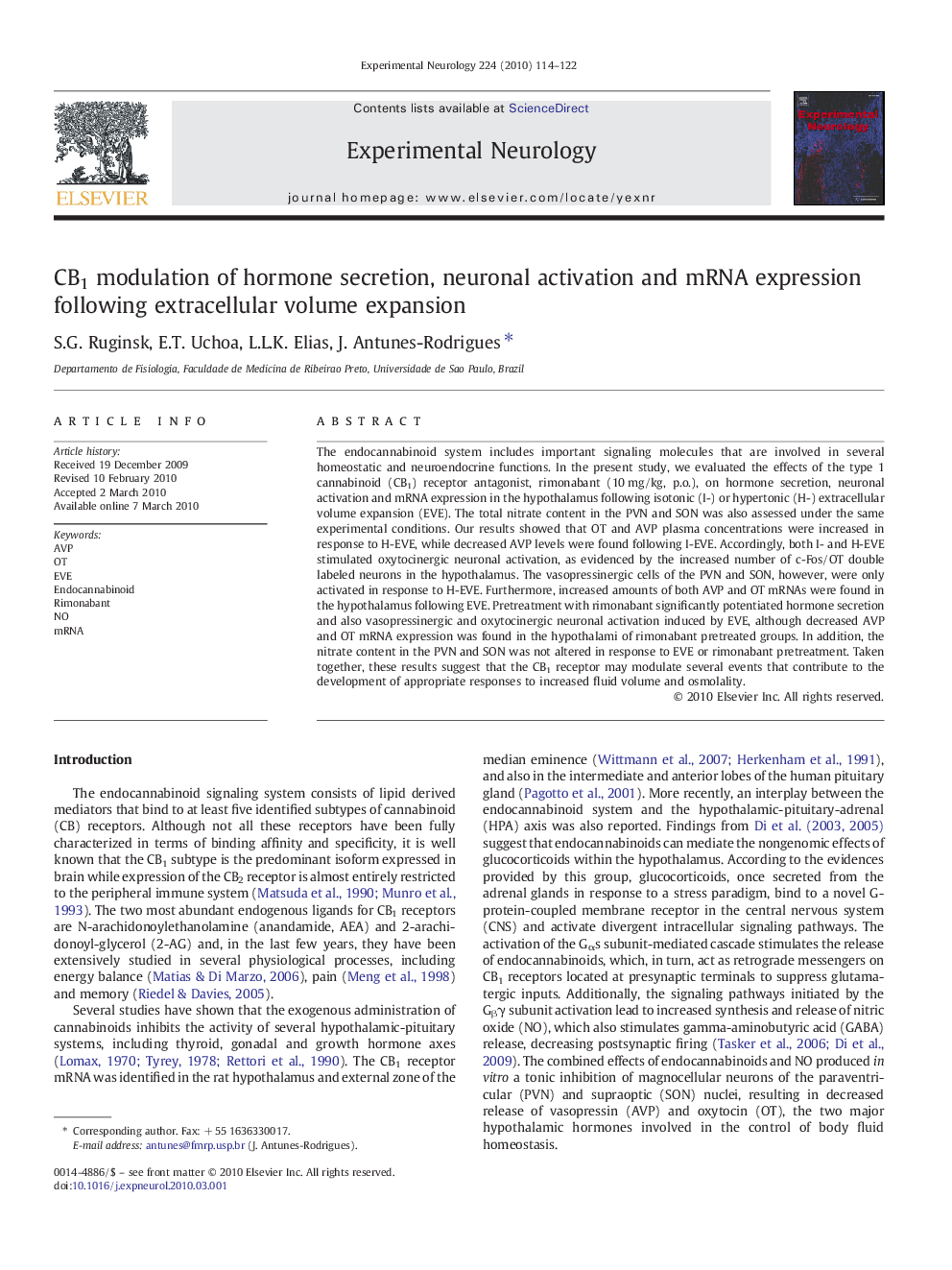| Article ID | Journal | Published Year | Pages | File Type |
|---|---|---|---|---|
| 3056147 | Experimental Neurology | 2010 | 9 Pages |
The endocannabinoid system includes important signaling molecules that are involved in several homeostatic and neuroendocrine functions. In the present study, we evaluated the effects of the type 1 cannabinoid (CB1) receptor antagonist, rimonabant (10 mg/kg, p.o.), on hormone secretion, neuronal activation and mRNA expression in the hypothalamus following isotonic (I-) or hypertonic (H-) extracellular volume expansion (EVE). The total nitrate content in the PVN and SON was also assessed under the same experimental conditions. Our results showed that OT and AVP plasma concentrations were increased in response to H-EVE, while decreased AVP levels were found following I-EVE. Accordingly, both I- and H-EVE stimulated oxytocinergic neuronal activation, as evidenced by the increased number of c-Fos/OT double labeled neurons in the hypothalamus. The vasopressinergic cells of the PVN and SON, however, were only activated in response to H-EVE. Furthermore, increased amounts of both AVP and OT mRNAs were found in the hypothalamus following EVE. Pretreatment with rimonabant significantly potentiated hormone secretion and also vasopressinergic and oxytocinergic neuronal activation induced by EVE, although decreased AVP and OT mRNA expression was found in the hypothalami of rimonabant pretreated groups. In addition, the nitrate content in the PVN and SON was not altered in response to EVE or rimonabant pretreatment. Taken together, these results suggest that the CB1 receptor may modulate several events that contribute to the development of appropriate responses to increased fluid volume and osmolality.
